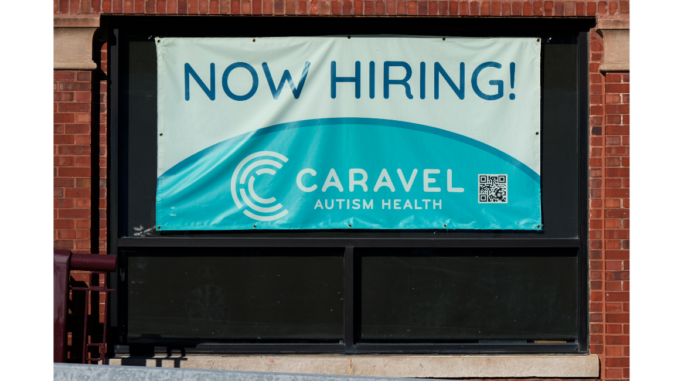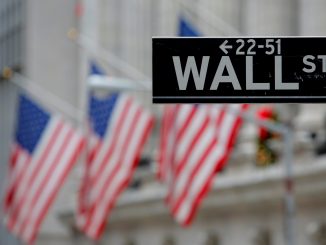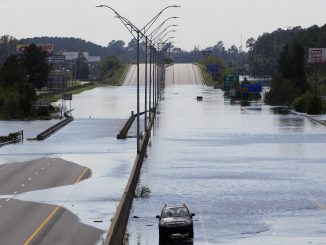

WASHINGTON, D.C. — U.S. employers added just 143,000 jobs last month, but the unemployment rate fell to 4%.
The first monthly jobs report of Donald Trump’s second presidency points to a solid but unspectacular labor market. January job creation dipped from the 261,000 added in November and 307,000 in December. Economists had expected about 170,000 new jobs in January.
The outlook is uncertain as Trump prepares to shake up economic policymaking by cutting federal jobs, imposing big taxes on foreign goods and deporting millions of undocumented workers.
For now, most Americans still enjoy unusual job security. But for those looking for work, the job hunt has been getting harder compared with the red-hot hiring days of 2021 to 2023.
Average hourly wages rose by 0.5% from December and 4.1% from January 2024, a bit hotter than forecasters had expected. That may be disappointing for the inflation fighters at the Federal Reserve. Still, some inflationary pressure from wage gains is being offset by U.S. productivity growth, which allows companies to pay more and earn fatter profits without raising prices.
“There is no cause for concern about the strength of the economy in today’s employment report,’’ Carl Weinberg and Mary Chen of High Frequency Economics wrote while citing the strong upward revisions from late 2024.
But they added that hiring in recent months suggests the Fed will be in no hurry to cut interest rates after doing so three times in 2024.
January hiring was narrow. Health care (44,000 new jobs), retail (34,000) and government (32,000) together accounted for 77% of new jobs last month. Mines shed 8,000 jobs.
The Labor Department said the Los Angeles wildfires and a cold snap in the Northeast and Midwest had “no discernable” impact on the January jobs numbers.
The future is cloudier.
A federal judge last Thursday temporarily blocked President Donald Trump’s plan to push out federal workers using financial incentives. A federal hiring freeze that Trump imposed Jan. 20 is a “negative for employment growth,’’ Bradley Saunders, an economist at Capital Economics, wrote.
Economists are also worried about Trump’s threats of a trade war against other countries. He’s already imposed a 10% tax on imports from China and is threatening tariffs on Canada, Mexico and the European Union, along with a possible universal levy on all imports.
Tariffs paid by U.S. importers, but typically passed along to customers, could heat up inflation — which has fallen from the four-decade high it reached in mid-2022 but is seemingly stuck above the Fed’s 2% target.
The job market has already lost momentum. American payrolls increased by 2 million last year, down from 2.6 million in 2023, 4.6 million in 2022 and a record 7.2 million in 2021 as the economy recovered from COVID-19 lockdowns. Employers are posting fewer jobs, and monthly job openings have tumbled from a record 12.2 million in March 2022 to 7.6 million in December — still a decent number by historical standards.
Aujanique Star, 20, of Fife, Washington, is a prenursing student who has been trying to switch from her caregiving job to a position in retail for nearly a year. But after submitting as many as 20 applications, she just keeps facing rejections.
“It makes me feel more frustrated that I have all this work experience and all this loyalty towards my jobs. … What am I missing?” she said.
As the labor market cools, American workers are losing confidence in their ability to find better pay or working conditions by changing jobs. The number of people quitting has fallen from a record 4.5 million near the height of the hiring boom in April 2022 to December’s 3.2 million, which is below pre-pandemic levels.
In regular annual revisions, the Labor Department reported that job creation from April 2023 through March 2024 wasn’t as good as originally reported: 589,000 fewer jobs were created over those 12 months. Preliminary estimates, released in August, had suggested the downward revisions would be bigger — 818,000 jobs.
White House press secretary Karoline Leavitt last Friday said the economy during Joe Biden’s presidency “was far worse than anyone thought.”
Trump is banking on tax cuts and regulatory curbs to bolster the economy. But his freezes on federal funding could halt infrastructure projects and manufacturing. His tariffs could hurt the retail sector, and his spending cuts could limit hiring in the health care and government sectors.



